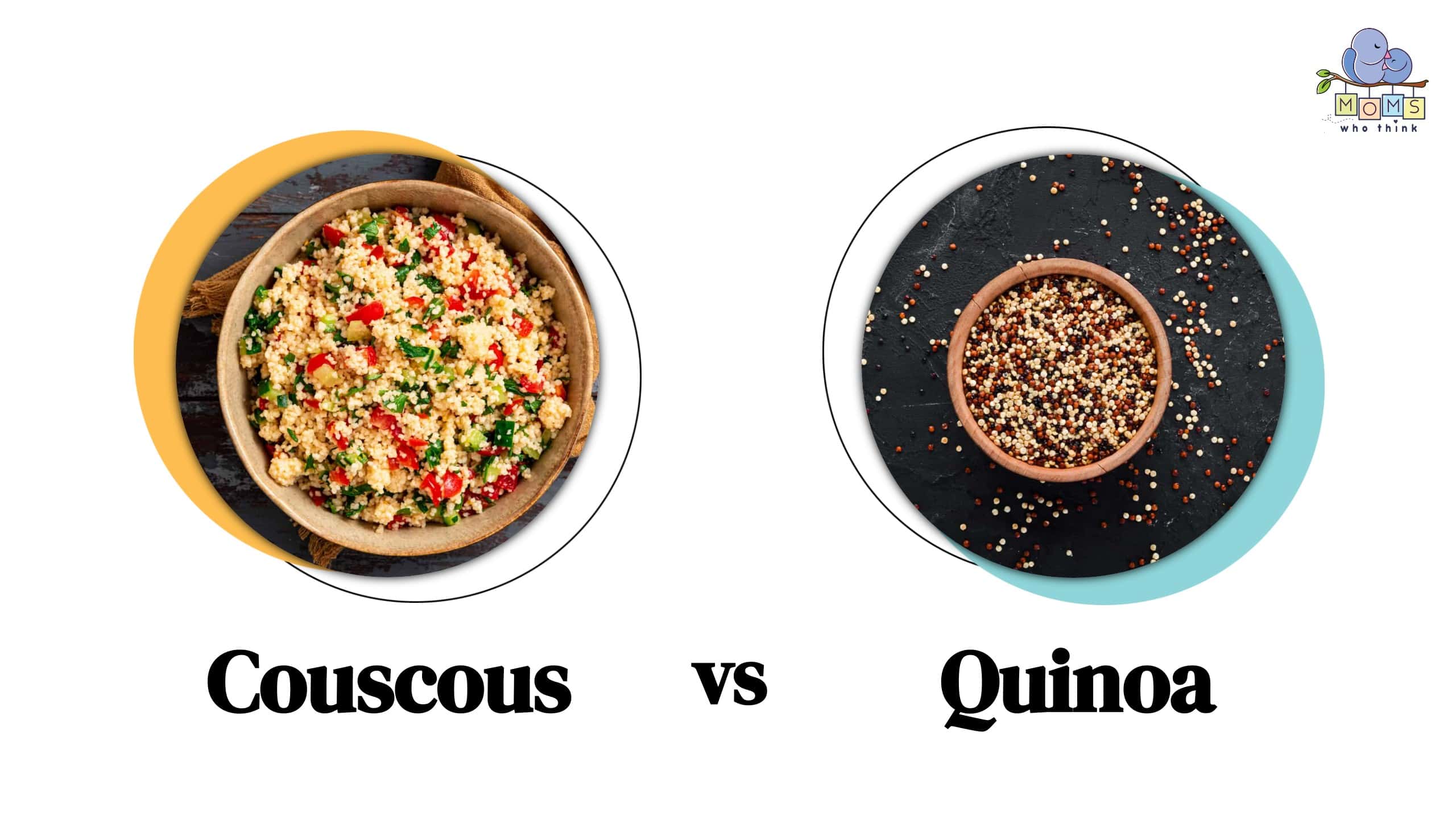Both couscous and quinoa are gaining more and more popularity in restaurants and as kitchen staples. Although they may look somewhat similar, they actually have key differences that set them apart. For starters, quinoa (pronounced keen-wah) is a whole grain. It is chock full of proteins, fiber and micronutrients compared to couscous. It can also be a part of a gluten-free diet. On the other hand, couscous, despite its rice-like appearance, is not gluten-free.
But what are the other differences between couscous vs. quinoa that you need to know. This article dives deep into not only the differences but their nutritional profiles as well as ways you can use both in your kitchen to create simple yet tasty culinary masterpieces! So let’s dive in!
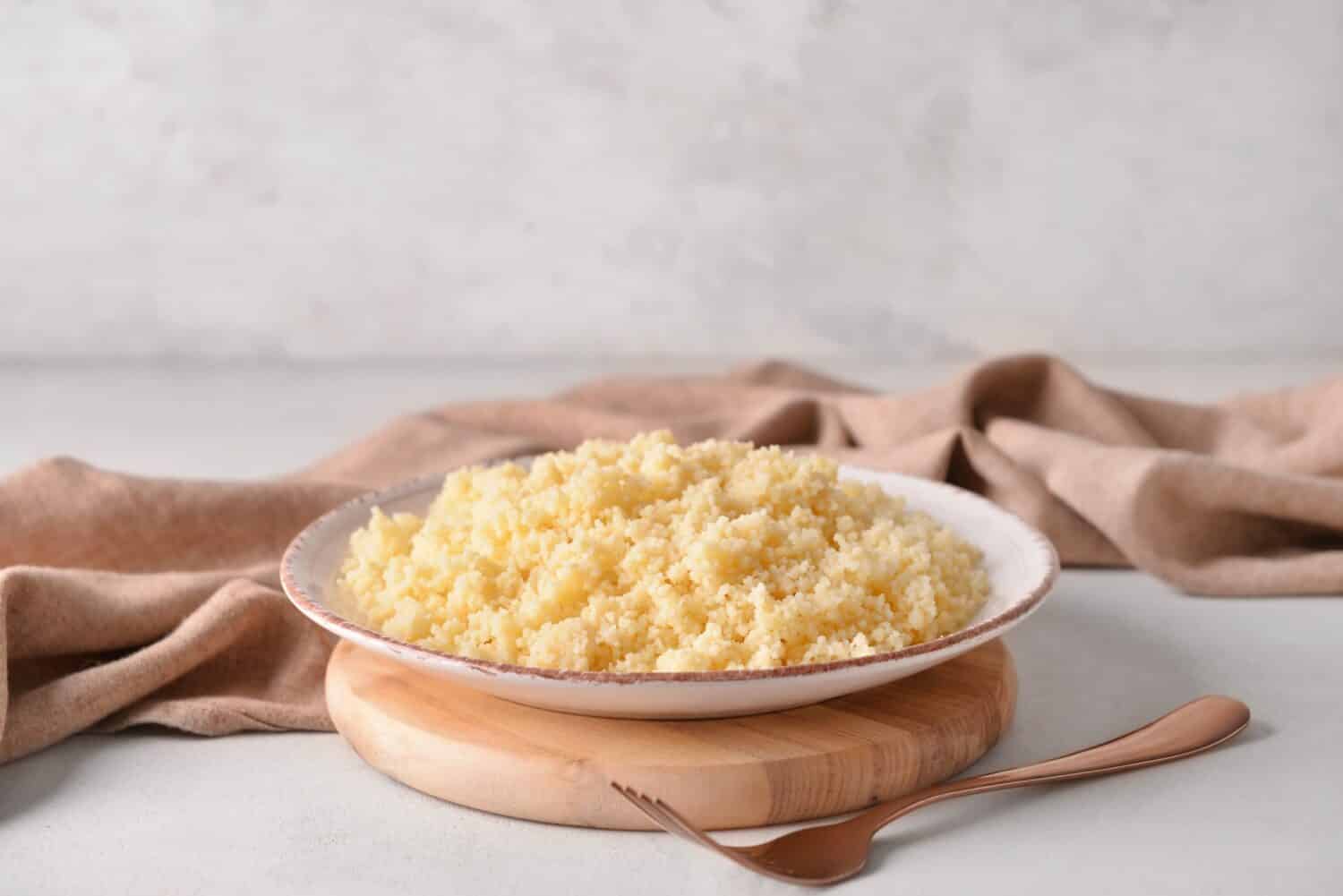
©Pixel-Shot/Shutterstock.com
Couscous vs. Quinoa: Origins
Let’s Start with Couscous
The exact beginnings of couscous are a bit hazy. According to food historian Lucie Bolens, couscous might have been around for a really long time, possibly during the reign of Masinissa of Numidia, which is now part of Algeria. There are even some pots and pans that look like what we use to make couscous that have been found in old graves dating back to around 300 BC.
It became a staple throughout North African countries including Libya, Egypt and Tunisia. And over time, different regions developed their own type of couscous. Recipes varied based on their different spices and veggies to make up flavorful and savory dishes.
How Quinoa Came About
Quinoa (pronounced keen-wah) has its roots in the mountains of Bolivia, Chile, and Peru, where it was first cultivated by the Incas. It's been a primary part of their diet for centuries. Quinoa is a bit of a plant imposter. Even though many consider it like a cereal grain because of the health benefits it offers, it's not really a grain at all. We’ll talk more about this later. But first…
What is Couscous?
What may come as a surprise to some is that couscous is also not a grain! It is a pasta made with semolina flour from durum wheat. It’s mixed with water to make tiny balls that look like pearls. People usually serve it with a flavorful stew poured over the top. However, couscous isn’t only made from pasta. In some regions of the world, it is common to use grains like pearl millet, sorghum, or bulgur, and call it couscous.
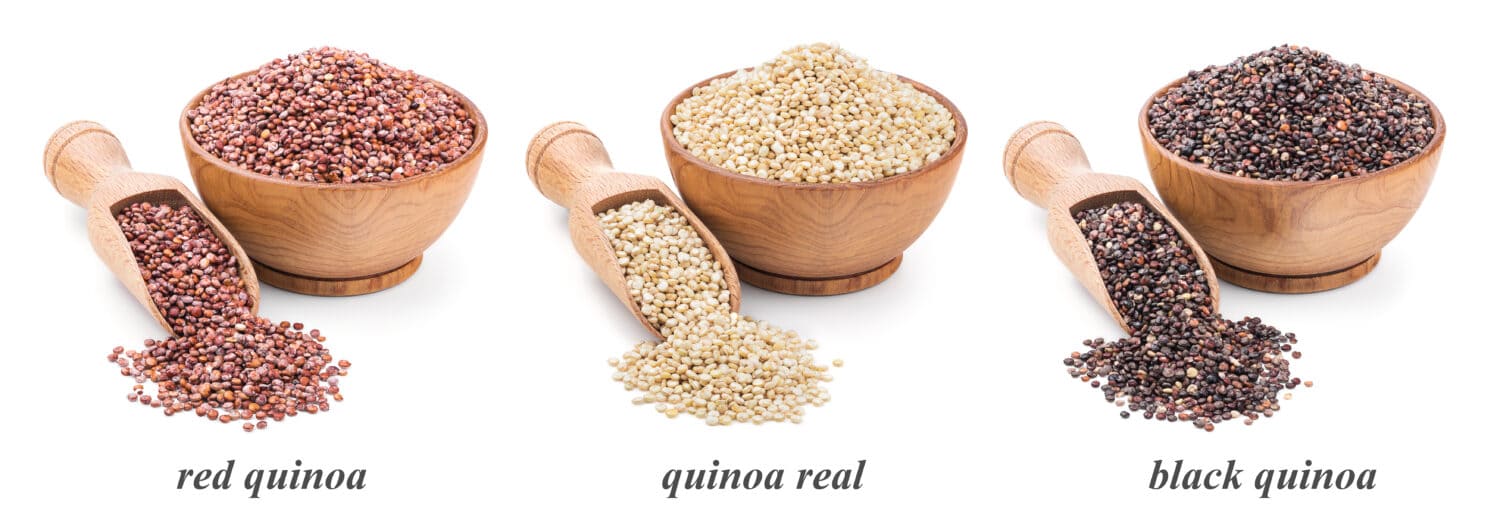
©Andrii Horulko/Shutterstock.com
What is Quinoa?
This may surprise you but, quinoa is not a grain either. It is more like a seed! It's what we call a “pseudocereal.” These are plants that produce seeds and fruits that are a lot like grains and can be used in pretty much the same ways. Quinoa is part of the same plant family as sugar beets and spinach, known as the goosefoot family. And when you look at them closely from a botanical perspective, you can clearly see they are quite similar. But quinoa is a pretty fascinating plant. Why?
Because people use various parts of quinoa for different purposes. For example, you can eat its leaves like a vegetable, and sometimes it's used for medicine. However, you may be familiar with the primary way of use – the quinoa seeds. These seeds are cooked just like rice and can be used in all sorts of recipes. They come in a variety of 3 different colors: black, red, and white.
Couscous vs. Quinoa: Taste and Texture
The breakdown on Couscous
Couscous is a type of dried pasta made from semolina, similar to tiny pasta. It’s typically characterized by its granular texture and a yellowish color. This unique quality allows couscous to cook incredibly quickly. It has a pleasant flavor that is nutty and slightly sweet.
The breakdown on Quinoa
Boasting a soft yet slightly chewy texture, quinoa resembles tiny little translucent disks when cooked. Its fluffiness makes it an excellent alternative to couscous. Some even describe its distinctive texture as a tad crunchy. Quinoa has a nutty taste with a hint of earthiness, similar to brown rice. And it separates into little spirals when cooking.
Couscous vs. Quinoa: Cooking methods
Consider both couscous and quinoa as healthy fast food! Why? Because both are fast and easy to prepare.
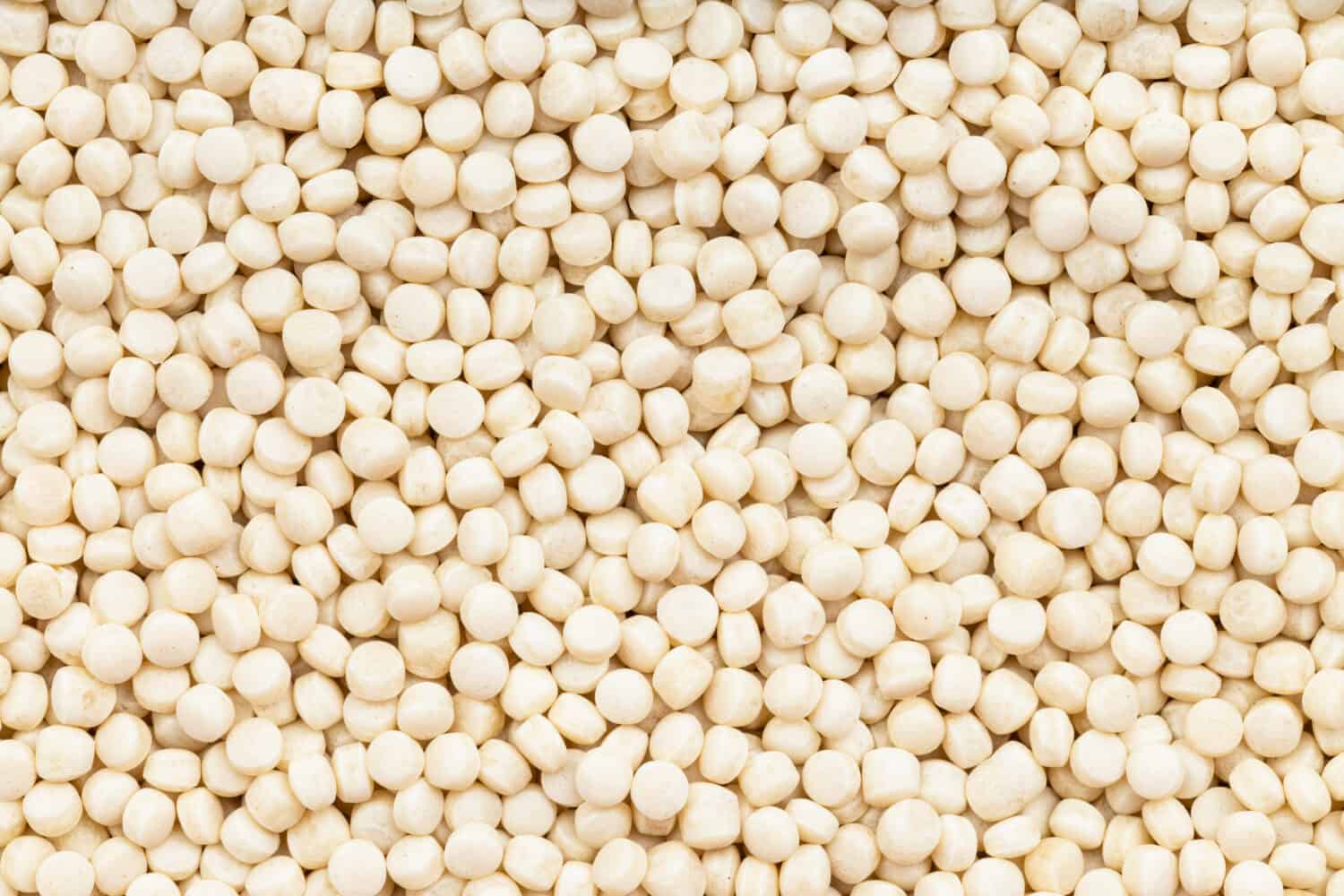
©vvoe/Shutterstock.com
Couscous
Here's a basic method for cooking couscous:
Ingredients:
1 cup couscous
1 1/2 cups water or broth
1 tablespoon olive oil or butter (optional)
Salt to taste (optional)
Cooking Time:
5 minutes
Instructions:
Boil Water or Broth:
In a saucepan, bring 1 1/2 cups of water or broth to a boil. You can add a pinch of salt and a tablespoon of olive oil or butter for extra flavor if you'd like.
Add Couscous:
Once the liquid is boiling, remove the saucepan from heat and immediately stir in 1 cup of couscous.
Cover and Let Sit:
Cover the saucepan with a lid and let it sit for about 5 minutes. The steam from the hot liquid will cook the couscous.
Fluff and Serve:
After 5 minutes, remove the lid and fluff the couscous with a fork to separate the grains. Be gentle to avoid mashing the couscous.
Note:
Serve as a side dish or as a base for various recipes. It’s a versatile pasta that can absorb the flavors of the ingredients you cook it with. So, feel free to experiment with different liquids, such as vegetable or chicken broth, and add vegetables, herbs, nuts, or spices to create a wide range of delicious dishes. You can also add herbs, spices, or other ingredients to customize the flavor to your liking. See below for tasty recipes with couscous!
Quinoa
You can cook quinoa easily in just a few steps!
Ingredients:
1 cup of quinoa
2 cups of water or broth (vegetable or chicken)
Cooking Time:
15-20 minutes
Instructions:
Rinse the Quinoa
Before cooking, rinse the quinoa thoroughly in a fine-mesh sieve under cold running water. This removes any bitterness from the outer coating called saponin.
Add Quinoa and Liquid
In a saucepan, combine 1 cup of quinoa with 2 cups of water or broth. You can also add a pinch of salt for flavor if desired.
Bring to a Boil
Place the saucepan over high heat and bring the mixture to a boil. Once it's boiling, reduce the heat to low, cover the saucepan with a tight-fitting lid, and let it simmer.
Cook Quinoa
Allow the quinoa to simmer for about 15-20 minutes or until all the liquid is absorbed. You'll know it's done when the quinoa turns into translucent “pearls,” and you can see the little spiral-like tails on the seeds.
Fluff and Rest
Turn off the heat and let the quinoa sit, covered, for about 5 minutes. This helps to fluff it up and finish the cooking process. Use a fork to fluff the quinoa and separate the grains.
Serve as a side dish, added to salads, used in grain bowls, or in any recipe where you would use rice or other grains. Like couscous, quinoa is versatile enough for you to experiment with using vegetable or chicken broth instead of water for added flavor.
Note: All liquid measures and times are approximate. Cooking length depends on how strong the heat is. It’s a good idea to lift the lid and check the water level halfway through cooking and toward the end, making sure there is still enough water to not scorch the couscous or quinoa. Be sure to taste the grains to see if they are fully cooked or starting to burn.
Couscous vs. Quinoa: Health Benefits
How Healthy is Couscous?
While couscous is a good source of plant-based protein, it generally has low nutritional value compared to quinoa. But there are ways you can tap into its nutritional value. For example, couscous is a great source of fiber, especially if you choose whole wheat couscous. Fiber helps your digestion and plays a significant role in stabilizing your blood sugar levels and keeping your belly feeling full longer. And because all couscous doesn’t contain any saturated fats and is cholesterol-free, it supports a healthy heart.
It's worth noting that while the vast majority of couscous in grocery stores and restaurants are not gluten-free, there are options available. Please check the labels and get to know the brands that truly offer gluten-free couscous. Also verify with the restaurant that their couscous really is gluten-free.
Is Quinoa any better?
On the other hand, quinoa is like a superfood that’s full of protein, fiber, vitamins, and minerals. And because it is a plant-based protein, it is often a common go to for vegetarians and vegans to meet their protein needs. Like couscous, its high fiber content aids digestion and keeps you feeling full. Plus, it has antioxidants that protect your cells and may lower the risk of heart disease.
This alone makes quinoa a healthier choice over couscous. For example, one cup of cooked quinoa gives you about 8 grams of protein and 5 grams of fiber. Compare this with one cup of cooked couscous which gives you about 6 grams of protein and 2 grams of fiber. See the difference?
And because quinoa is gluten-free, it won't cause blood sugar spikes, making it a smart choice for people with gluten sensitivities or diabetes. It also supports strong bones and adds deliciously to various dishes.
Couscous vs. Quinoa: Nutritional Value
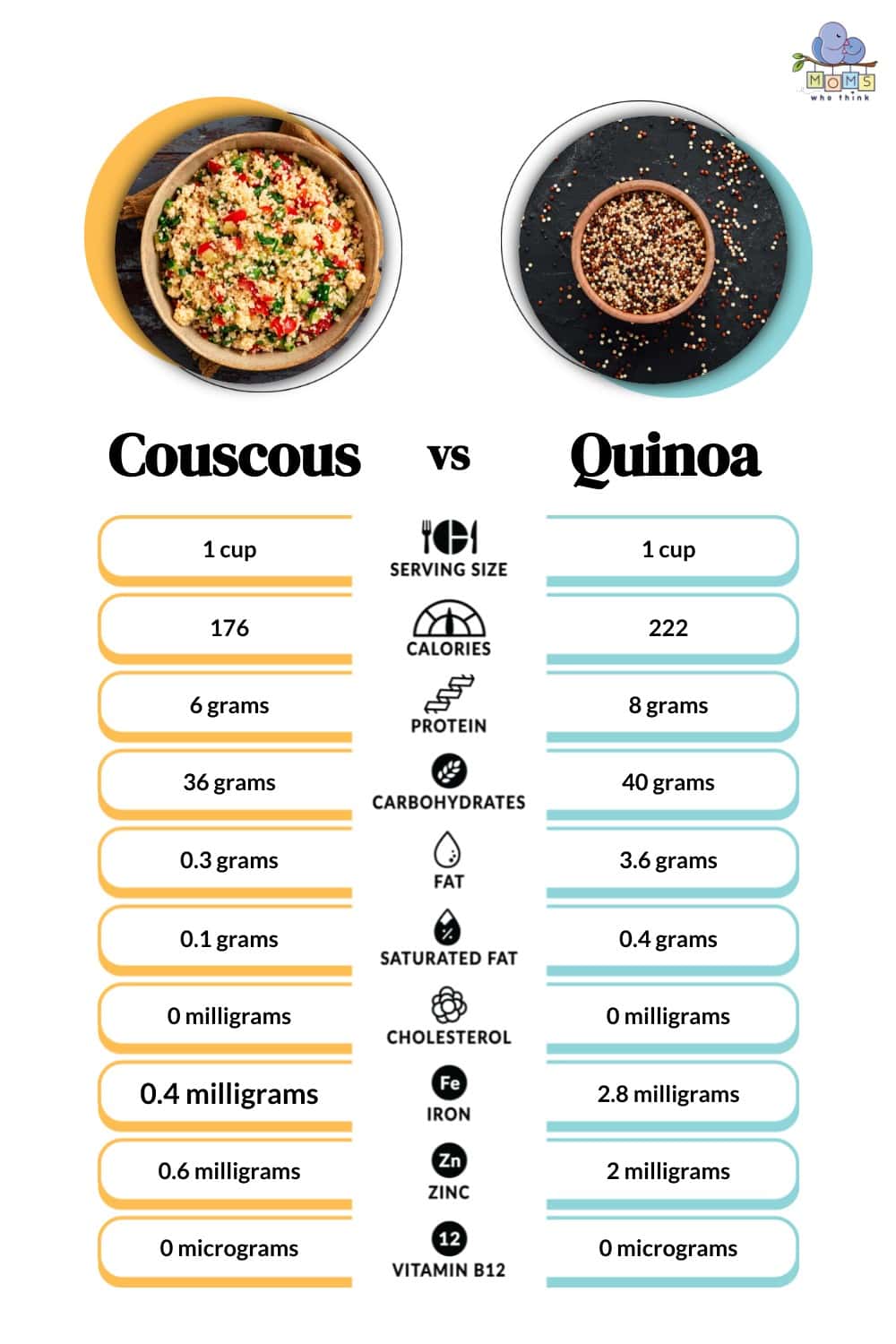
Final Thoughts:
While both couscous and quinoa look similar, this article clearly highlights their differences. For example, couscous is like tiny pasta made from wheat and is found in dishes from North Africa and the Middle East. It's quick to cook and takes on the flavors of the food it's with. And while most couscous is not gluten-free, finding some requires a little searching.
Quinoa, on the other hand, is a seed from South America. It's super healthy, and packed with protein, fiber, vitamins, and minerals. Quinoa has a mild, nutty taste, and is naturally gluten-free. You can use it in lots of recipes, making it a versatile and nutritious choice for your meals. So, couscous is like pasta, and quinoa is a super nutritious seed that's great for your health.
Delicious and Nutritious Recipes with Couscous
Tasty Quinoa Recipe
Quinoa Salad with Chickpeas, Cucumber, and Herbs
Ingredients
1 cup quinoa, rinsed and drained
2 cups water or vegetable broth
15 ounce can of chickpeas, drained and rinsed
Cucumber, diced
1 cup cherry tomatoes, halved
1/2 red onion, finely chopped
1/2 cup fresh parsley, chopped
1/4 cup fresh mint leaves, chopped
Juice of 1 lemon
3 tablespoons extra-virgin olive oil
Salt and pepper to taste
Instructions
Cook Quinoa: In a saucepan, bring 2 cups of water or vegetable broth to a boil. Next, stir in the rinsed quinoa, reduce the heat to low, cover, and simmer for about 15-20 minutes or until the liquid is absorbed. Remove from heat and let it cool.
Prepare Veggies: While the quinoa is cooking, chop the cucumber, cherry tomatoes, red onion, parsley, and mint. You can adjust the quantities to your taste.
Combine Ingredients: In a large bowl, combine the cooked and cooled quinoa, chickpeas, cucumber, cherry tomatoes, red onion, parsley, and mint.
Make Dressing: In a small bowl, whisk together the lemon juice, extra-virgin olive oil, salt, and pepper.
Mix and Chill: Pour the dressing over the quinoa and veggies, then toss everything together until well combined. Finally, refrigerate the salad for at least 30 minutes to allow the flavors to meld.
Serve your quinoa salad chilled, garnished with additional fresh herbs if desired. It makes a delicious and satisfying meal on its own or as a side dish.
Feel free to customize this recipe by adding other ingredients like feta cheese, olives, or grilled chicken for extra flavor and protein. Enjoy your tasty and nutritious quinoa salad for lunch or as a side dish for dinner!
